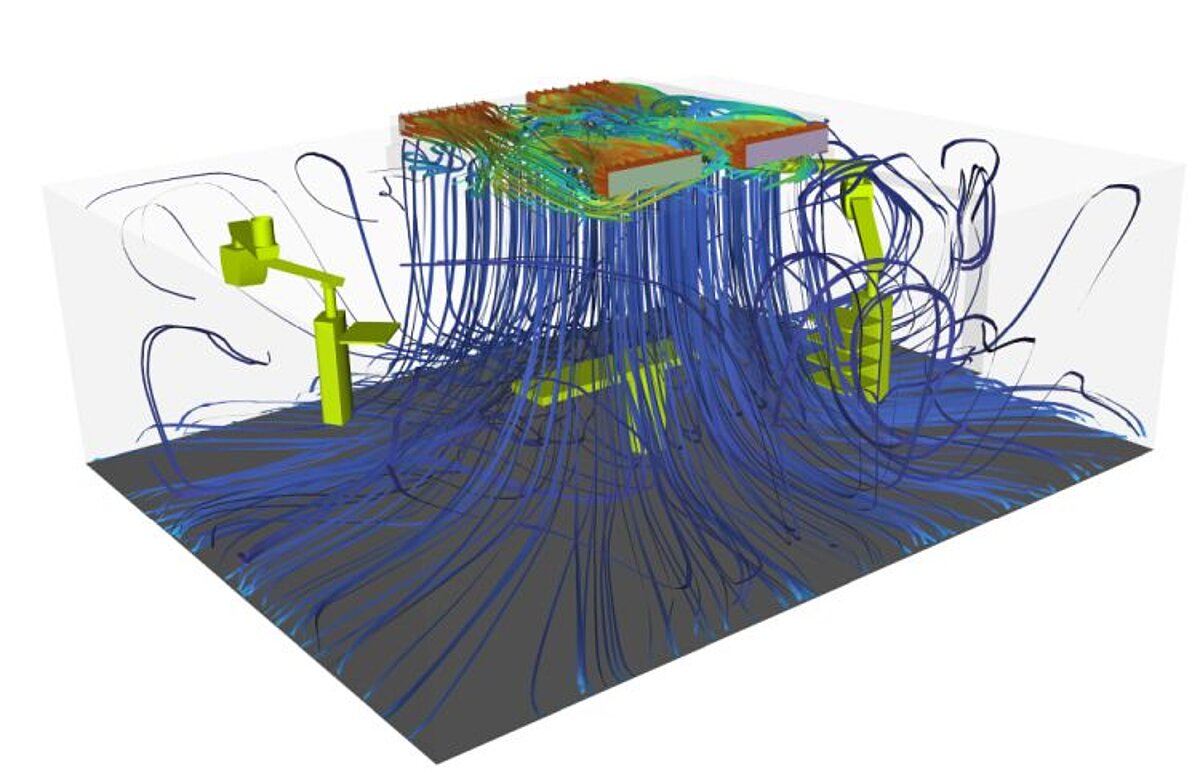Using flow simulation to protect patients

Measurements of smallest air flows are often very complicated and associated with a high measurement effort. Especially if measures for air pollution control, pollutant dispersion or the dispersion of aerosols and viruses are to be derived. By means of CFD simulation (Computational Fluid Dynamics), corresponding data can be determined with little effort in order to subsequently derive optimization possibilities. As Merkle & Partner shows in the context of a simulation for an operating theater.
The fundamental goal of cleanroom concepts is to create a clean environment and to maximally reduce the transfer of contamination to the object to be protected. In the operating room, the patient must be protected from viruses, bacteria and dirt particles.
Using low-turbulence displacement flow (TAV), air is directed to form a curtain around the patient and is uniformly exhausted at the base near the floor. The TAV flows are developed ideally. That is, without swiveled-in examination lights or the personnel, who are not only in the laminar air flow, but are themselves sources of heat, aerosols and particles.
In a cooperation with Merkle & Partner as well as OHB System AG and the HAT Group, CFD simulations were applied to relevant spaces in medical technology but also in aerospace. First results show the power of CFD simulation in terms of better understanding, risk reduction as well as optimization of operational concepts.
"Simple simulations have already found their way into cleanroom technology in order to reduce the measurement effort or to reproduce flows. The added value from the CFD simulation approach on the part of Merkle & Partner can be found in the visualization of equipment, people and motion sequences," says Stefan Merkle, Managing Director of Merkle & Partner GbR. Thus, the ideal-typical TAV flow is also taken into account in extended models, from which new evaluation approaches and optimization possibilities can be derived.
